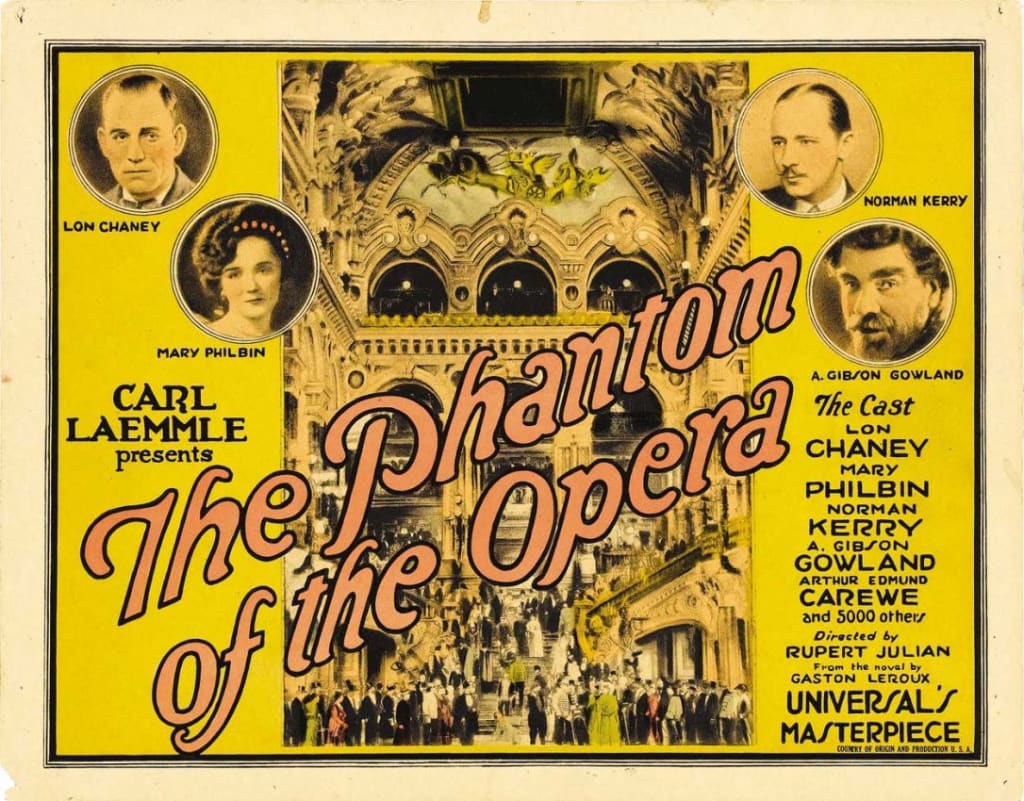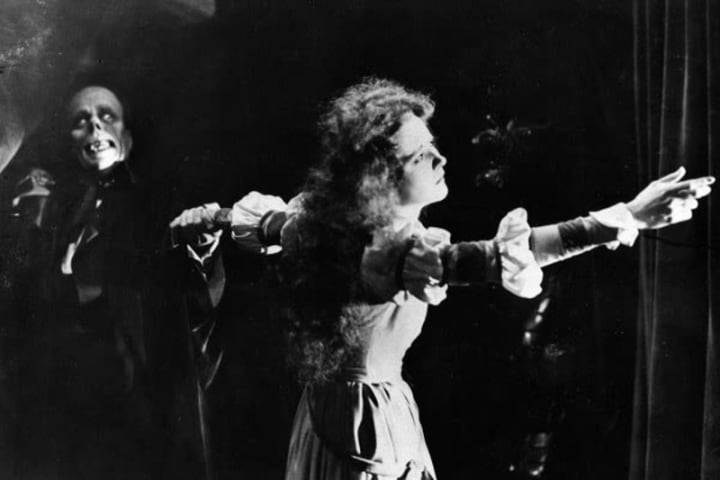The Phantom of the Opera (1925)
1001 Movies to See Before You Die (Schneider, J.S, Smith, I.H)

In this article, we will be looking at 2019’s book “1001 Movies to See Before You Die” and going through each film in a random order that I have chosen. We will be looking at what constitutes this film to be on the list and whether I think this film deserves to be here at all. I want to make perfectly clear that I won’t be revealing details from this book such as analyses by film reporters who have written about the film in question, so if you want the book itself you’ll have to buy it. But I will be covering the book’s suggestions on which films should be your top priority. I wouldn’t doubt for a second that everyone reading this article has probably watched many of these movies anyway. But we are just here to have a bit of fun. We’re going to not just look at whether it should be on this list but we’re also going to look at why the film has such a legacy at all. Remember, this is the 2019 version of the book and so, films like “Joker” will not be featured in this book and any film that came out in 2020 (and if we get there, in 2021). So strap in and if you have your own suggestions then don’t hesitate to email me using the address in my bio. Let’s get on with it then.
The Phantom of the Opera (1925) dir. by Rupert Julian
I will not lie to you - when I was little, this film scared the hell out of me. It was always Lon Chaney that scared me because he was such a great character actor. As I grew up, I knew he was brilliant but I always looked back on to how much that scared me as a young child. Be that as it may, this film has become one of my favourite silent films ever.
Variety though, was not so sure of itself. Here is what the magazine had to say about the film:
"The Phantom of the Opera is not a bad film from a technical viewpoint, but revolving around the terrifying of all inmates of the Grand Opera House in Paris by a criminally insane mind behind a hideous face, the combination makes a welsh rarebit look foolish as a sleep destroyer.”
But Roger Ebert, many years after the film was released, gave his consensus on the film and was pretty positive about it here: "It creates beneath the opera one of the most grotesque places in the cinema, and Chaney's performance transforms an absurd character into a haunting one.”

On the character of the ‘Phantom’, Roger Ebert was particularly in-depth - I will link his review at the end of the article, but this was my favourite part of it:
“It is the idea of the Phantom, really, that fascinates us: the idea of a cruelly mistreated man going mad in self-imposed exile in the very cellars, dungeons and torture chambers where he was, apparently, disfigured in the first place. His obsession with Christine reflects his desire to win back some joy from a world that has mistreated him…”
Ebert also comments on the Masquerade scene and states about the primitive uses of colour techniques, which again, is brilliant for its time. Check out what he has to say:
“Much more impressive is the Masked Ball sequence and its sequel on the roof of the opera house. The filmmakers (director Rupert Julien, replaced by Edward Sedgwick and assisted by Chaney) use primitive color techniques to saturate the ball with brilliant scarlets and less obtrusive greens. Many scenes throughout the film are tinted, which was common enough in silent days, but the Masked Ball is a primitive form of Technicolor, in which the Phantom's great red cloak sweeps through the air like a carrion bird that enfolds him.”
He compares Leroux’s phantom to Lon Chaney’s portrayal of the phantom and it is awesome. Roger Ebert is always awesome.

Rotten Tomatoes shows that it holds generally favourable reviews and the critics’ consensus reads the following:
"Decades later, it still retains its ability to scare -- and Lon Chaney's performance remains one of the benchmarks of the horror genre.”
In the eighties, the film was preserved in the National Film Registry within the Library of Congress for being culturally, historically and aesthetically significant and has been in the public domain since 1953.
Here is Roger Ebert’s full review of the film.
About the Creator
Annie Kapur
200K+ Reads on Vocal.
English Lecturer
🎓Literature & Writing (B.A)
🎓Film & Writing (M.A)
🎓Secondary English Education (PgDipEd) (QTS)
📍Birmingham, UK






Comments
There are no comments for this story
Be the first to respond and start the conversation.